Owls
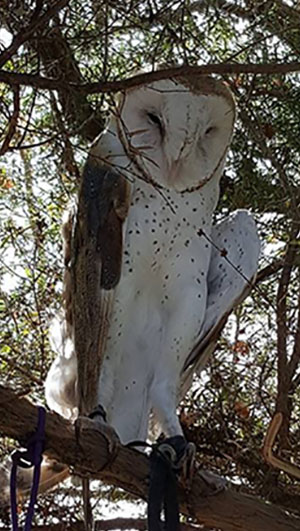
Barn Owl
Male Adult
Year Injured: March 2009 (hatch year)
Added to collection: April 2009 (6 weeks old at intake)
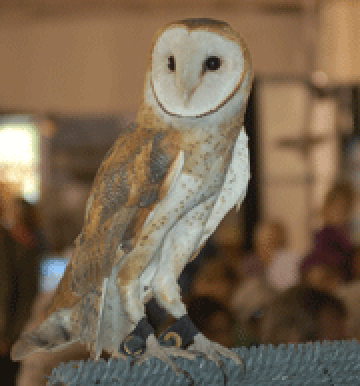
The male Barn Owl fell from a palm tree in Brentwood when he was just a teeny guy of about 6 weeks. The exam showed an old fracture of his left wing and he was dehydrated and covered in parasites. Most likely he was a runt and couldn't compete with the rest of his siblings. The wing fracture was considered a permanent disability.
We acquired him shortly thereafter and raised him, and they grow very, very fast, about 12 weeks to full adult size. Naturally he has a baby book, complete with all the hallmark moments of growing up Barn Owl.
He now lives in his own mini-barn and can fly fairly well, although not well enough for a wild life. He does think he's pretty handsome though and calls in female Barn Owls every Spring.

Eurasian Eagle Owl
Female Adult
Added to collection: 2003 at 7 weeks of age
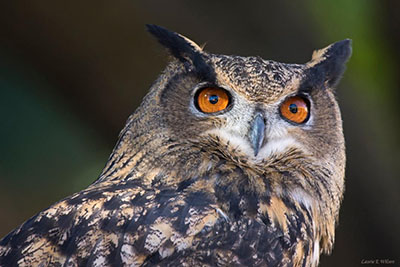
The Eagle Owl was born in Missouri as a captive bred education animal. We received her when she was 7 weeks old, a huge ball of dandelion fluff with gargantuan feet.
Eagle owls are native to Europe and Asia and are considered the largest owls in the world, cousins to the Great Horned Owl of North America.
Our Eagle Owl is quite personable. Among other things, she is an enthusiastic bather and will plop into her bath tray on a daily basis. No prissy bath for this girl,either. This is a full-on Journey to the Bottom of the Sea. She dips and flutters, shakes and shimmies till most of the water is spread hither and yon and she is a soggy, dripping, droopy-feather mop. She has also been known to drag other items in with her... toys, towels, even her breakfast!

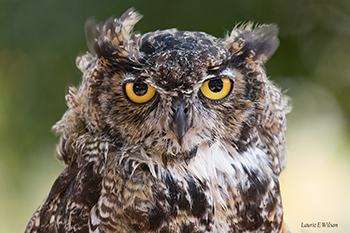
Great Horned Owl
Female Adult
Year Injured: March 2002
Added to collection: June 2002
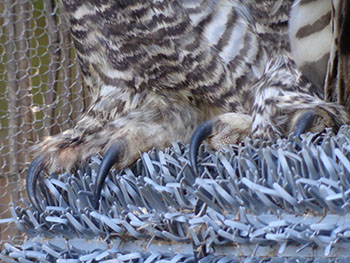
The Great Horned is particularly fond of being camoflaged in his aviary during the day, a very natural inclination. He has a potted redwood tree that helps obscure him while we perform housekeeping duties. Come dusk however he becomes Mr. Bigshot, scrambling up on top of the poor rewood's drooping stem to hoot at the world.
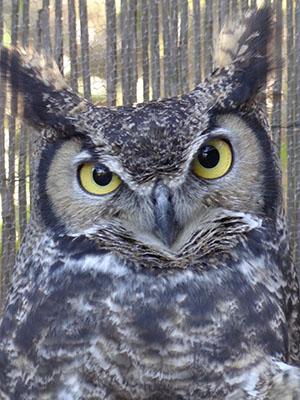

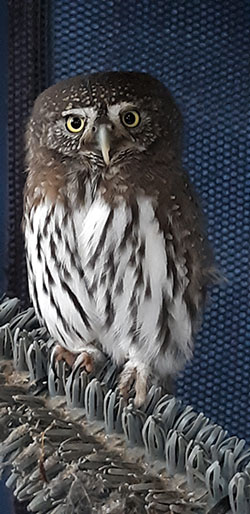
Northern Pygmy-Owl
Male Adult
Injury: Traumatic amputation of left wingtip (hit by car)
Added to collection: December 2018
Northern pygmy owls are the second smallest North American owl, weighing in at about 2 ounces. This bird was hit by a car in Capital Reef National Park. A good samaritan saw him sitting on the yellow line so scooped him up along with the severed wing tip and got him to Ranger Jessie Jordan. Jessie got the bird to Second Chance Wildlife Rehabilitation, where they treated him for trauma and eventually placed him with us.
Pygmy owls are diurnal (active in the day) and fierce, regularly taking prey (birds) much larger than themselves. While this pint-sized boy is no exception, he is amazingly tolerant as well. Although this species does not have ear tufts officially, when he is scared he smooths down all his feathers and has “teddy bear ears” that barely stick up. Mighty endearing!

Contact us at: snowyowl@nativebirds.org